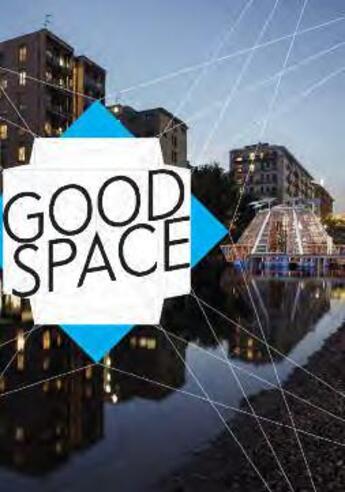Des idées de lecture pour ce début d'année !
Passionné(e) de lecture ? Inscrivez-vous
gratuitement ou connectez-vous pour rejoindre la
communauté et bénéficier de toutes les fonctionnalités du site !

During the summer, surprising uses of space and subversive artistic strategies examining the shape and significance of public spaces will be shown at Villa Merkel - both actually implemented as well as designed as utopias or settled in the digital domain. The focus is on visions and dreams that involve very different possi - bilities for the design of public cohabitation. It is about sustainability and the perspectives and questions about how the individual can and eventually should act in the public realm. In the rooms of the Villa Merkel, at the Bahnwärterhaus and Merkel Park, GOOD SPACE presents models, videos and designs that are regarded as concretizations of procedural disputes. With »EVERYTHING IS ARCHITECTURE: Bau Magazine from the 60s and 70s«, an exhibition by the ICA in London in 2015 has been integrated into this exhibition, focusing on historical preconditions of visionary and utopian architectural and spatial concepts of the 1960s and 1970s. In addition to originals of the architecture magazine »Bau«, approaches are presented by COOP HIMMELB( L)AU and the group Haus-Rucker-Co., founded in Vienna that have been working since 1967/68 on radically different concepts of architecture. The question of how we might shape our future and achieve a worth - while society in the face of limited resources is answered by both exhibition and book with approaches for func - tion al and aesthetic redefinitions of spaces featuring specially built structures as well as formulating various forms of urban experiences, and representing development models for cities and societies with social margins as a starting point. The architecture of information struc - t ures is discussed, as well as the problems associated with surveillance and invisibility in the digital space. It is clearly shown how the study of evolutionary processes in plants serves as an example for future-oriented models in the fields of bio-design or urban ecology.
Il n'y a pas encore de discussion sur ce livre
Soyez le premier à en lancer une !

Des idées de lecture pour ce début d'année !

Si certaines sont impressionnantes et effrayantes, d'autres sont drôles et rassurantes !

A gagner : la BD jeunesse adaptée du classique de Mary Shelley !

Caraïbes, 1492. "Ce sont ceux qui ont posé le pied sur ces terres qui ont amené la barbarie, la torture, la cruauté, la destruction des lieux, la mort..."